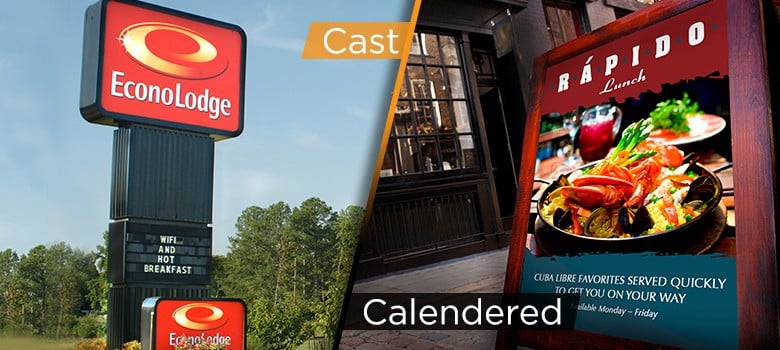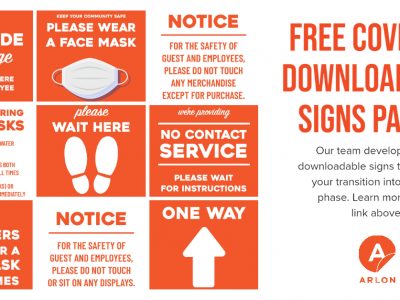Cast vs Calendered – Which is Best?
How to compare cast vs calendered film in terms that are clear enough to make good purchasing decisions but not so Technical that you would fall asleep before figuring it out? Still awake? I swear no more mention of the “T” word.
Think of it this way; time in the sun is never your friend when you happen to be a material that was chosen for cost rather than durability. Think of those tourist shop umbrellas that are sun-bleached after one season and end up splitting at the seams by season two.
This is the same thing – the sun shade and vinyl are meant to handle many common or short-term applications but they get wrongly used. Then, they are accused of being cheap when they fade, fail or fall apart. When it comes to tougher applications over a longer warranty it pays to buy the right materials in the first place then have to replace them later. As anyone who has had the pleasure of “redoing” vinyl graphics knows the lowest cost involved is the vinyl itself. Removal of cracked or brittle film and the very bad rap that lands directly on the sign shop are far more expensive than your vinyl investment.
There are far too many specific details having to do with vinyl and the makeup of vinyl I can cover but I’ll stick with the primary decision points.
Cast Film

The very names given to these two types of vinyl film (cast or calendered) can tell us a lot about their best application. Cast film is produced by first turning the ingredients of the finished film; PVC resin, plasticizer, colorant, etc. into paint by the use of a solvent. When matte, semi-gloss or high gloss vinyl is required then the mold film will be a mirror of that texture. The thin wet colored, clear or white vinyl film is then dried and cured at a rather high temperature to form a very flexible film. There are many connections between the ingredients that are bonded via process temperatures far higher than any application will experience. Now we can see why cast film can take so much distortion, heat abuse (such as that in thermoforming a sign face) and sun energy without losing its flexibility and cracking, fading or popping away from curves or tight corners such that are encountered in vehicle wraps.
Still awake? Now to move onto calendered film.
Calendered Film
Calendered film is not made through the paint casting method but instead through a “melt” process which involves the same type of ingredients as cast film. Instead of being carried through a coating unit onto a mold and then drying into a thin film of about 2 mils (50 microns), calendering first melts the ingredients at about half the temperature used to fuse cast film ingredients. As it cools the molten PVC is rolled through “calendering” rollers to achieve the final width, thickness and surface finish before being wound up for further processing.
Compared to cast film we can understand why calendered film is cheaper to make:
- No solvent cost
- No casting “mold” cost
- Lower energy cost
This results in a film that doesn’t quite have a resistance to the wide range of sign making processes (such as thermoforming), applications (such as south facing dark sign faces) or environments (from Sao Paulo, Brazil to Saint Paul Minnesota). Long-term signage and its associated colors will need to stand up to all of these elements without fading, cracking or peeling away.
So the next time you see some junior member of a competitive sign shop removing a prematurely crippled sign or wrap and reinstalling what can only be a “redo”; most likely you will see that little thought bubble above his head saying, “How did this happen?”, well, you’ll know the answer!





very good article, please email me, I have a technical question to ask
Thanks for the comment Stephen, we’ll be sending an email shortly.
[…] Monomeric and Polymeric Calendered Films – Learn the Difference! – Arlon HUB™ on Choosing the Right Vinyl […]
[…] learn more about the difference between cast and calendered film, read our Cast Vs Calendered blog […]